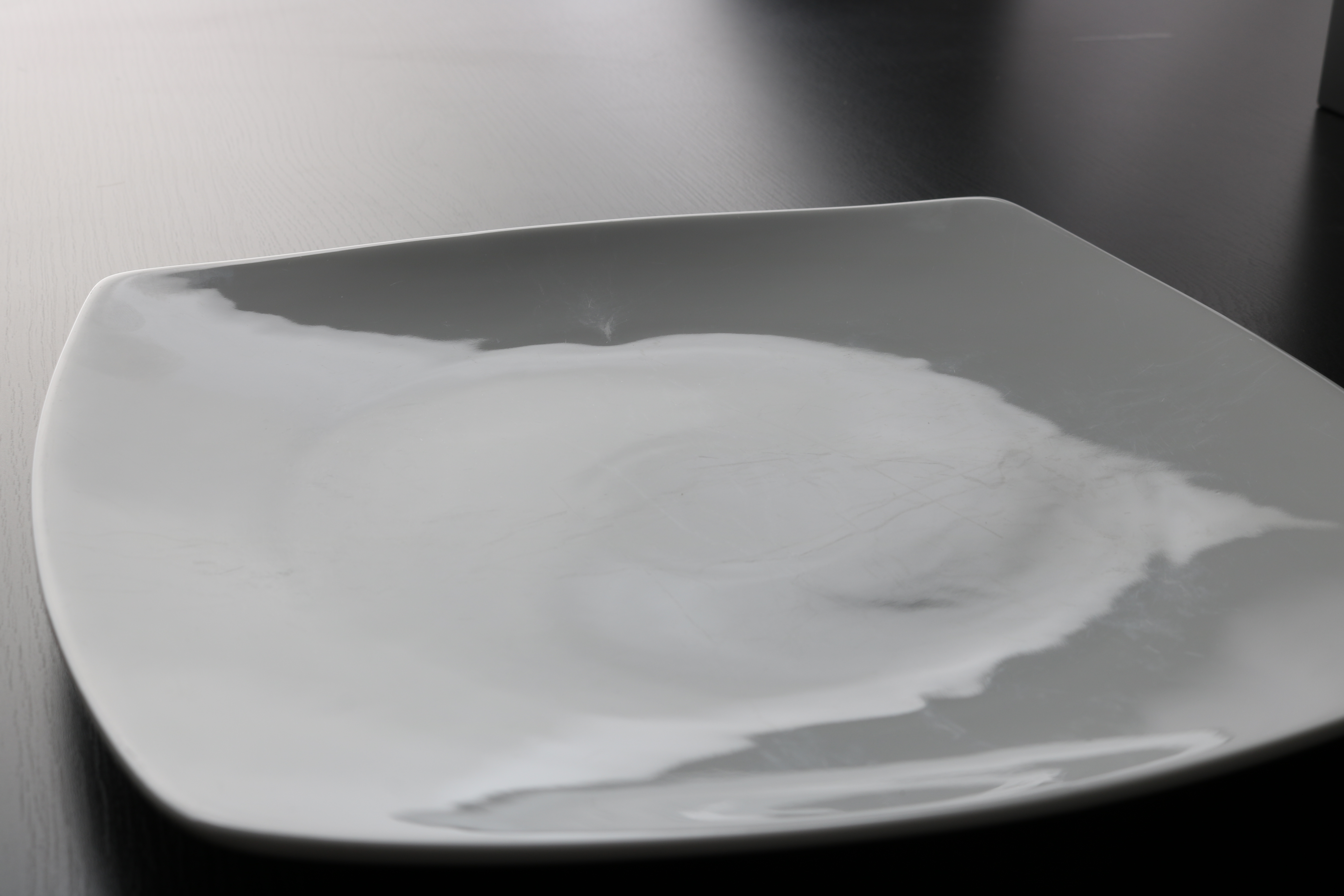Scratches & grinding marks

One of the most extensive and complex complaints about porcelain and ceramic crockery is surface damage to the glazes. This is actually logical, as damage to the body under the glaze usually always leads to breakage of the item as a result of mechanical impact. However, the causes and originators of glaze damage are very different. The consumer tends to quickly conclude that there is a production error or that the product is defective, but this is by no means so clear-cut. We have therefore summarised the five most common types of damage for you in this "Scratches & cuts" section of our product information.
- Glaze abrasion (corrosion)
- Glaze cracks (flush breakage)
- Grinding marks (mechanical load)
- Cutting marks (scored fabrics)
- Streaking (cutlery abrasion)
First of all - was everything better in the past?
With regard to the production of porcelain, we allow ourselves the subjective judgement "yes, porcelain used to be better". This assessment is independent of the manufacturer and brand has never been a decisive factor for the quality of porcelain. The true quality of porcelain is not its brand, origin or price, but its unique functional and functional properties, which only result from the combination of kaolin, quartz and feldspar at a temperature above 1,320 °C. In the past, the porcelain industry...
- only the highest quality and purest kaolins are used
- All raw materials mixed, cleaned and prepared in-house
- a quality check is carried out by human hands at each individual stage of production
- without piecework wages, the porcelain workers are paid according to their level of training
- thicker and more stable glazes applied
- fired with coal and each porcelain portion fired in its own fireclay capsule
- the goods are fired for more than 30 hours without fast firing kilns
- only hand-sorted 1st choice goods are delivered to the stores and faulty goods are usually destroyed.
If we were still producing today according to the rules and with the effort of the 1950s to 1980s, a plate would cost around 25 to 30 euros - just like back then! A thousand marks for a coffee service was not a rarity at that time, but rather an appreciation of white gold. Decades before that, porcelain was reserved for the aristocracy and the upper classes.
However, it wasn't just the porcelain that was better, but also the way it was handled. The beautiful tableware, crystal and silver cutlery were usually washed by hand so that you had more of it. There were decorative display cabinets in which the crockery was carefully stored and, regardless of whether you had a dishwasher or not, each item was wiped again with a linen cloth. The machine used almost twice as much water to wash the dishes as it does today and the detergents were nowhere near as aggressive.
In other words, the entire environment around the kitchen, table and dining table has changed.
Fault analysis of damage on or in the glaze
The analysis of damage to the glaze can be divided relatively easily into two groups. There are "apparent" faults that are superimposed on the glaze, such as cutlery abrasion, or damage in the glaze, such as cutting marks or grinding marks. All types of damage that you cannot "feel" can always be attributed to an external cause. In this case, please follow our recommendations Purchase and use/solid residues/.
If the damage can be felt and touched, then it is definitely damage to the glaze and probably one of the damage patterns of cutting marks or grinding marks is present. However, this does not mean that the fault or cause is due to a defective product, as such damage is always the result of use and interaction with other substances and materials.
Proper use
In the case of damage caused by cutting marks or grinding marks, the question remains as to what the intended usage properties of a plate or slab are, what they must be able to do and what they must be able to withstand. At what load and under what circumstances does cut resistance cease to be a guaranteed property for a ceramic product? This is always the central question in such complaints. In the case of white porcelain, disputable damage generally occurs only very rarely, whereas with coloured tableware and especially with modern matt glazes - in statistical comparison to the sales volume - it happens very often! Anyone buying coloured tableware, whether ceramic or porcelain, should follow our recommendations for use and treat this ware with much more care than white tableware.
Burden of evidence for glaze damage
The cause of damage to a glaze, whether cutting, grinding or corrosion marks, must always be considered on a case-by-case basis. The individual subpages of this page "Scratches & grinding marks" are intended to help you make your own assessment of the causes and the interaction of different factors. Above all, however, our explanations are intended to provide recommendations for action and use that will prolong the long-term durability and enjoyment of your porcelain. From the many years of our work with and for porcelain, we can state statistically that less than 1 case in 100 is actually due to a production defect or poor quality of the porcelain.
